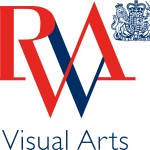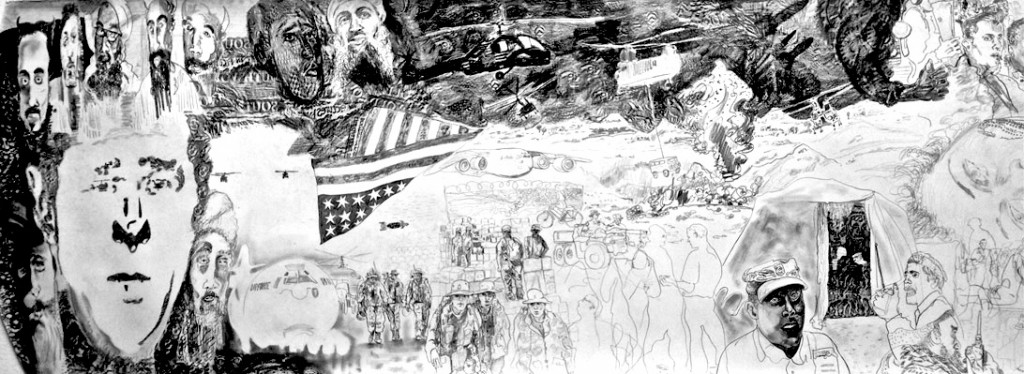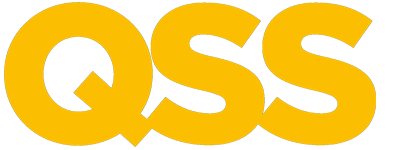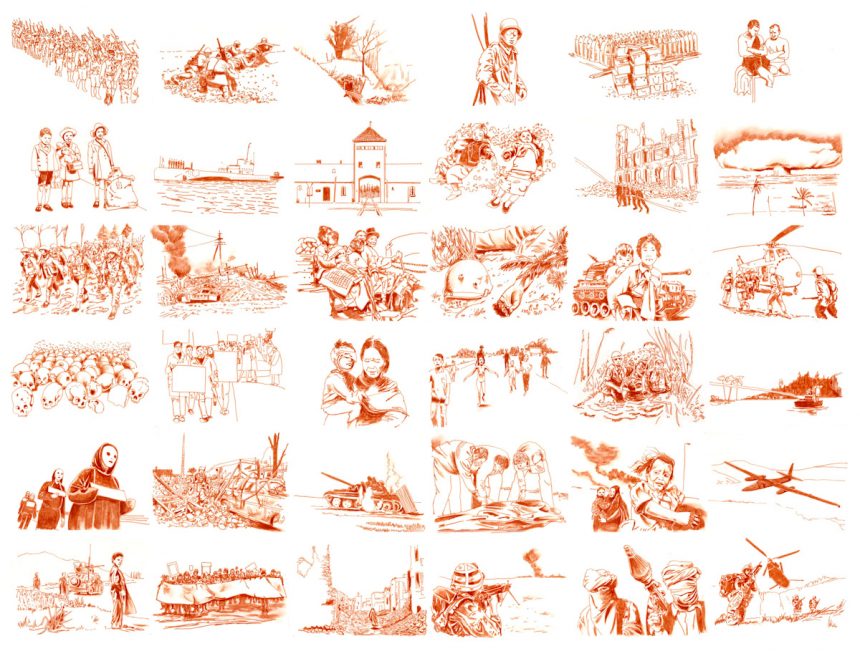Shock and Awe – Contemporary Artists at War and Peace
Gail Ritchie, QSS artist, has been invited to exhibit work as part of Art, Memory and the Aftermath of War at the Royal West of England Academy. Part of a series of exhibitions curated by Professor Paul Gough, Ritchie will exhibit one of her tree ring drawings in ‘Shock and Awe’ Contemporary Artists at War and Peace. This summer Gail will be undertaking visual research in Berlin and Gallipoli as part of an ongoing exploration of how conflict is remembered and commemorated.

19 July – 17 September 2014. The Royal West of England Academy, Bristol’s first art gallery
It is an uncomfortable truth, but conflict has long fascinated artists, poets and writers. Wilfred Owen, probably the most articulate purveyor of the pity of war, returned to the front lines not just to be with his men, but because he understood that the dreadfulness of war fuelled his imagination, honing his poetic sensibilities as nothing else could. His poetry acts as both witness and warning, and like so many of the greatest art works of the twentieth century, serves as a salutary reminder of the dreadful consequences of armed conflict.
‘Shock and Awe’ is an exhibition of work by contemporary artists recently exposed to the front-line of war in Iraq, Afghanistan and the Balkans. It is also a platform for artists who are fascinated by acts of remembrance, who use their art as a warning, as a form of protest at the wickedness of the world.
All of the artists in this exhibition have worked in highly demanding, often very stressful conditions: Jill Gibbon makes drawings at arms fairs all over the world; Mario Minichiello and Xavier Pick were commissioned to record British and US troops in the war zones of Iraq; David Cotterrell was supported by the Wellcome Trust to travel to Basra and Helmand Province to record the arduous work of the British Medical Corps. Tim Shaw RA makes iconic large-scale sculptural pieces that pass acerbic comment on recent and distant war; Elizabeth Turrell RWA has been working for over a decade with a group of medal-makers from the US, UK and Europe to create anti-war and peace medals. Katie Davies has made a film about the repatriation ceremonies at Royal Wootton Bassett. Derived from 17 separate visits to the town, Davies’s film installation is an extraordinary evocation of loss, mourning and absence.

The Sleep of Reason (Detail), Mario Minichiello
Alongside these powerful evocations of war and peace, a number of artists have created work in response to war: Michael Sandle RA and Emma Stibbon RWA RA react to monumental sculptures across Europe; the late Richard Hamilton’s ‘Medal of dishonour’ offers a searing critique of political subterfuge; Ian Chamberlain reflects on the industrial technologies of conflict; Lucy Willis RWA responds to the plight of the dispossessed, while Paul Gough RWA draws on the emblematic power of civic statuary to explore how memory is shaped and controlled in our over-crowded urban spaces.
Back from the Front – Art, Memory and the Aftermath of War is a programme of exhibitions and events at the RWA commemorating the start of The Great War, and 75th anniversary of the start of the Second World War. It explores the theme of conflict and memory across a series of interrelated exhibitions including Brothers in Art: John and Paul Nash; Shock and Awe, and The Death of Nature.
The exhibition and programme is curated by Professor Paul Gough supported by Arts Council England, the Bristol Cultural Development Partnership and the University of the West of England, Bristol.
Image above: Century, 100 Traces of War (detail, 36 of 100 drawings shown, each 10 x 15 cm). Ink on tracing paper, 60 x 90 cm



